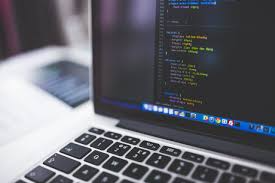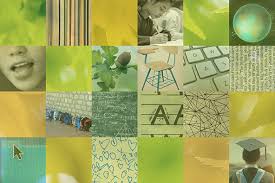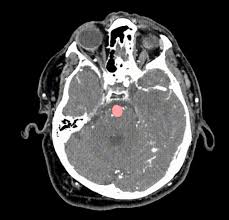
India Launches National Coding Curriculum in Schools A Strategic Leap Toward Digital Literacy
India has unveiled a comprehensive national coding curriculum designed to equip students with foundational programming skills and digital literacy from a young age. Emphasizing early exposure to computational thinking, this initiative represents a significant shift in the country's educational priorities, reflecting the broader global trend that recognizes coding as a critical skill in the 21st century. Under this program, students from grades 6 through 12 will engage in structured coding modules integrated across core subjects such as mathematics, science, and even art. The curriculum is set to roll out starting July 2025 in a phased manner, reaching thousands of government and aided schools in the first year, and eventually covering the entire network of around one and a half million schools nationwide.
At the heart of the initiative lies a progressive approach rather than teaching coding as an isolated subject, educators will infuse programming concepts across disciplines to contextualize learning. Imagine a lesson in math where students write simple Python scripts to generate geometric patterns, or a science class where they simulate plant growth using basic algorithms. This interdisciplinary model is designed to anchor abstract coding principles in real world scenarios, making them more relatable and intuitive. By combining computational logic with creative thinking, the curriculum aims to nurture both technical proficiency and problem solving skills, laying a foundation for critical thinking and innovation.
To support this effort, the Ministry of Education has developed open source learning materials, lesson plans, and digital platforms accessible to teachers and students. These resources include interactive tutorials, sample code snippets, and video explainers all free of charge. In rural and resource constrained settings, where connectivity may be limited, short offline coding modules are available via preloaded educational tablets. Furthermore, the ministry has announced a large scale teacher training campaign more than 100,000 teachers will undergo certification in computational pedagogy by the end of 2026. This training focuses on two core areas coding fluency and classroom integration equipping educators to deliver technical content with clarity and confidence.
One of the standout features of this program is its emphasis on inclusivity. Recognizing gender imbalances in STEM education, special initiatives will aim to engage girls and marginalized students. Local “Coding Clubs” will be established in every school, with after class workshops, coding camps, and events like hackathons to foster a supportive community. Female students may receive mentorship from women professionals in India’s tech sector, and incentive programs such as scholarships and recognition awards are designed to encourage participation. Early pilot studies in states like Kerala and Gujarat indicate that such interventions increase not only enrollment of girls in coding courses but also their sustained engagement over time.
India’s decision to introduce coding curriculum is also aimed at future readiness and economic competitiveness. With the nation’s booming tech sector and its reputation as a global IT hub, there is growing recognition that future industries will demand a digitally literate workforce, not only from engineering backgrounds but from all academic disciplines. Introducing coding at the school level is expected to build a pipeline of talent fluent in logic, automation, and digital communication. Long term objectives include increasing domestic capacity in emerging areas such as artificial intelligence, data science, and cybersecurity. By weaving coding into early education, India positions itself to meet future workforce demands while reducing its reliance on upskilling existing professionals.
The rollout has sparked nationwide enthusiasm and some practical challenges. Many schools, especially in remote areas, are still grappling with infrastructural limitations, including intermittent electricity and a shortage of devices. The government has committed to a massive hardware push, promising 5 million tablets and one million desktops under the Digital India initiative to support the coding rollout. Local partnerships with tech firms and NGOs are also planned to improve connectivity and set up “Digital Learning Corners.” Still, disparities persist ensuring uniform resource availability remains a key implementation hurdle, and success will depend on effective monitoring, maintenance, and community support.
Another pillar of sustainability lies in incentivizing teachers and aligning coding education with national assessment systems. The program seeks to integrate computational thinking into existing examinations and internal assessments. Students may encounter coding based problems in board exams for mathematics and science as early as 2027, and optional standalone coding exams could be introduced thereafter. Teacher evaluations are expected to factor in coding instruction effectiveness, encouraging genuine engagement rather than superficial compliance. The hope is that coding education becomes a permanent feature of India’s academic ethos, rather than a short lived experiment.
Beyond the classroom, India’s national coding curriculum opens pathways for international collaboration and educational innovation. Partnerships with countries like Estonia and Finland, which have successfully introduced coding at the elementary or middle school level, are in the works. Joint programs with tech companies such as Infosys, Microsoft, and Google will provide real world exposure through internships, speaker sessions, and curriculum support. Educational research institutions plan to track the program’s impact over the coming years, studying areas such as student creativity, logical reasoning, gender participation, and performance in STEM subjects. By inviting global expertise and investing in rigorous evaluation, India sets a template for evaluating educational reform in a data driven manner.
In summary, India’s launch of a national coding curriculum represents a strategic and forward looking embrace of digital education. Anchored in open source pedagogy, teacher training, inclusive outreach, and strong government backing, the initiative seeks to cultivate a generation of students equipped to thrive in a technology driven world. Although significant challenges in infrastructure and implementation lie ahead, the program’s comprehensive design, community driven ethos, and global partnerships provide hope for meaningful, sustainable change. As coding becomes as much a part of India’s classrooms as reading, writing, and arithmetic, the nation is staking its claim on the future empowering young minds to shape tomorrow’s innovations.
Related Post
Popular News
Subscribe To Our Newsletter
No spam, notifications only about new products, updates.
















